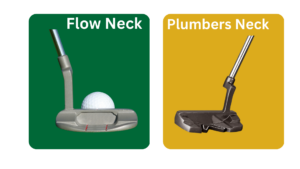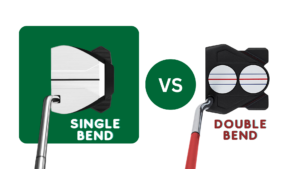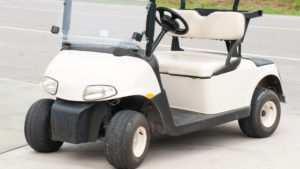
Understanding the factors that affect golf club distances is a crucial part of improving a golfer’s performance. There are many factors that can affect how far your ball travels. These include the type of club used, the length of the club, gender, height, and many others.
By controlling the distance the golf ball travels, the golfer reduces the number of swings required to sink a putt.
This article will be discussing the average golf club distance and the factors affecting distance. It’ll also cover how to ensure you have the correct club length.
What Are the Average Distances for Each Golf Club?
The golf club distance that each golfer can achieve varies. This can depend on gender and experience level. Therefore, for each club, there is an average distance for males and females. The range includes beginners (who are usually short hitters), intermediates ( medium hitters), and professionals (long hitters).

Golf Club Distances: Women vs. Men
The difference between male and female golfers is due to swing speed. The male average golfer usually has a faster golf swing speed, so they can achieve longer distances.
Additionally, there’s a more significant gap between the long hitters and short hitters in females than in males. The larger gap is mainly because women in the professional category tend to hit much longer than women in the intermediate or beginner categories.
This isn’t the case for men. For example, a man who achieves 80 yards has a high chance of hitting as long as a man who achieves 110 yards. While this is possible for women, it’s unlikely.
Female Golf Club Distance Chart (in yards)
| Club Type | Beginner’s Distance | Intermediate Distance | Professional’s Distance |
|---|---|---|---|
| Driver | 150 | 175 | 200 |
| 3 Wood | 125 | 150 | 180 |
| 5 Wood | 105 | 135 | 170 |
| 2 Iron | 105 | 135 | 170 |
| 3 Iron | 100 | 125 | 160 |
| 4 Iron | 90 | 120 | 150 |
| 5 Iron | 80 | 110 | 140 |
| 6 Iron | 70 | 100 | 130 |
| 7 Iron | 65 | 90 | 120 |
| 8 Iron | 60 | 80 | 110 |
| 9 Iron | 55 | 70 | 95 |
| Pitching Wedge | 50 | 60 | 80 |
| Sand Wedge | 40 | 50 | 60 |
| Lob Wedge | 35 | 45 | 50 |
Male Golf Club Distance Chart (in yards)
| Club Type | Beginner’s Distance | Intermediate Distance | Professional’s Distance |
|---|---|---|---|
| Driver | 200 | 230 | 260 |
| 3 Wood | 180 | 215 | 235 |
| 5 Wood | 170 | 195 | 210 |
| 2 Iron | 170 | 195 | 210 |
| 3 Iron | 160 | 180 | 200 |
| 4 Iron | 150 | 170 | 185 |
| 5 Iron | 140 | 160 | 170 |
| 6 Iron | 130 | 150 | 160 |
| 7 Iron | 120 | 140 | 150 |
| 8 Iron | 110 | 130 | 140 |
| 9 Iron | 95 | 115 | 130 |
| Pitching Wedge | 80 | 105 | 120 |
| Sand Wedge | 60 | 80 | 100 |
| Lob Wedge | 50 | 70 | 90 |

Why Do Different Clubs Provide Different Golf Club Distances?
Each club is designed for a different purpose. For example, a driver’s goal is to achieve distance while a pitching wedge is used for loft. In order to accomplish these goals, each club is angled differently. Therefore, it’s essential to know what you want to achieve and the correct club to do so.
Pitching wedges aren’t the only club that can provide a loft.
Club Type Average Loft Chart
| Club Type | Minimum Average Loft | Maximum Average Loft |
|---|---|---|
| 2 Wood | 12° | 15° |
| 3 Wood | 12° | 17° |
| 4 Wood | 15° | 19° |
| 5 Wood | 20° | 23° |
| 1 Iron | 15° | 18° |
| 2 Iron | 18° | 20° |
| 3 Iron | 21° | 24° |
| 4 Iron | 25° | 28° |
| 5 Iron | 28° | 32° |
| 6 Iron | 32° | 36° |
| 7 Iron | 36° | 40° |
| 8 Iron | 40° | 44° |
| 9 Iron | 45° | 48° |
| Pitching Wedge | 47° | 53° |
| Sand Wedge | 54° | 58° |
| Lob Wedge | 58° | 62° |

How Does Weather Affect Your Average Distance?
Weather can have a major impact on the average driving distance and loft. For example, in windy conditions, it isn’t possible to hit the ball into strong winds and achieve the desired loft and distance.
Additionally, golfing in rainy conditions will have a similar impact. To overcome wet conditions, you should use more hybrids and woods.

How Long Should Your Golf Clubs Be for Your Height?
The length of golf clubs is one of the essential things to pay attention to before making your purchase. The club length is vital because it can have an impact on the distance of your swing. The longer your golf club, the further your ball will travel.
By purchasing clubs that are too short, you’ll be sacrificing distance for more accuracy. On the other hand, clubs that are too long will have the reverse effect. The accuracy decreases while the distance increases.
The length of a golf club is measured from the end of the grip to the ground. The measurements are taken while the club is in the correct address position.
Are Your Clubs the Wrong Length?
If you think your clubs are too long, here are some signs to look out for:
- Inability to move your lower body as necessary when swinging.
- Having to stand upright
- The club’s shaft seems weak
- The ball flies too high
- After hitting the ball, it frequently flies to the left.
- Only the toe of the club makes contact with the ball.
If you’re concerned that your clubs are too short, you’ll find that:
- To use the club, you have to bend too far at the waist and knees.
- The ball frequently flies to the right.
- When you hit the ball only the heel of the club makes contact with it.
- The tempo is too fast
- The path of the swing is in-to-out.
For more, be sure to check out our article on how to fit golf clubs in 5 easy steps.
What Are the Standard Golf Club Sizes?
There are four different types of clubs. Each one has a unique recommended length.
An Iron club is usually around 40 inches long. Irons come in a variety of sizes. Until you reach the nine-iron, the irons fall within half an inch of the size. The nine-iron measures in at approximately 36 inches.
The material that the shaft is made of can also affect the average length. Usually, graphite shafts are an inch longer than steel ones. Additionally, men’s Irons are usually one inch longer than women’s.
Drivers are usually 45 inches. Three-woods are two inches shorter than other woods (approximately 42 inches). A putter is usually 34 inches.
Necessary Adjustments According to Height
The lengths mentioned above are appropriate for people that are between five feet and five feet, nine inches. However, for people above this height adjustments will be required.
If the player is:
- Between 5 feet, 10 inches, and 6 feet, 3 inches, then 1/2-inch should be added to the average length.
- Between 6 feet, 3 inches, and 6 feet, 5 inches should add an inch to the average length.
- Above 6 feet, 5 inches, should add 2 inches to the standard length.

Finding Out Your Golf Club Average Distance
The best way to figure out your average distance is by heading to a driving range. Using a golf course is possible but may produce slightly inaccurate results.
Use each of your golf clubs to take a large number of shots (around 50) and note them down. Disregard the 5 best and worst of these shots. Then, calculate the average.
It’s important to note that your averages can improve with time and experience. For example, the mens’ average driving distance used to be 208 yards a few years ago but is now reportedly 217 yards. Additionally, these distances are not an indication of skill.
Avoiding Comparisons
Comparing your distances to other golfers -especially professionals- can have a detrimental impact on your potential. Not only does it add unnecessary pressure, but it also takes the fun out of the game.
The distance for any club varies depending on the player. Some players may achieve the same distance using a 3-iron that another player achieves using a 7-iron.
The most important thing to realize is that there isn’t a correct distance. Golfers should focus their energy on figuring out their yardage. This will make it possible to improve their overall performance. Understanding your distance will also help you when it comes to determining which equipment to purchase.

How Far Does Tiger Woods Hit a 7-Iron?
Tiger Woods is a PGA Tour professional. Using his middle irons ( a 5-iron, 6-iron, or 7-iron), he is able to achieve distances up to 208 yards. Meanwhile, Annika Sorenstam (an LPGA Tour professional) achieves a distance of around 176 yards using a 7-iron.
However, recreational female and male golfers usually achieve distances of 65 yards and 120 yards, respectively. This shows the wide range of distances and proves that comparing yourself to professional golfers doesn’t make sense.
How Far Should I Hit a 7-Iron?
If you still want to check if you are within the 7-iron average range. The average for most golfers is 147 to 159 yards.
How to Improve Your Swing Speed
The faster the swing speed the further the distance. Therefore if you want to improve your distance, working on your swing speed is a good place to start. Here are some simple tips that you can implement to improve your swing speed.
1. Stop decelerating!
Sometimes golfers subconsciously decelerate their club mid-swing in an attempt to aim the golf ball in the direction they want. It’s better to trust your swing. Follow-through with your swing.
This is especially true with diver clubs. An average distance driver is designed to be more aerodynamic and therefore faster than other clubs. It’s designed to be swung very fast and with a lot of power.
Furthermore, decelerating in order to improve your aim fails 90% of the time. Most of the time, slowing down your swing while hitting the ball makes it swing too far to the right.

2. Improve Your Flexibility and Core Strength
Being more flexible will allow you to have a bigger turn. Increasing your core strength will make you capable of handling your clubs at higher speeds. Therefore, both flexibility and core strength have a major impact on the speed you generate.
There are many exercises you can use to improve core strength and flexibility. These include:
- Squats
- Pull-ups
- Dumbbell rows
- Crunches
- Yoga
3. Overspeed Training
It’s important to note that Overspeed training isn’t strength training. This type of training is a way to get a golfer to swing the golf club faster by “tricking” the brain.
Most golfers can swing much faster than they do. The restricted speed is because the brain subconsciously suppresses the speed to maintain the athlete’s balance.
Overspeed training involves starting with a club that is lighter than normal clubs to generate speed. After growing accustomed to that speed, the weight is increased until it’s heavier than your normal club.
This technique increases your balance so that you get used to swinging fast with your normal club.
Wrap Up
There are many factors that affect golf club distances. The type of club you use has a major impact on the distance because each club is designed for a different purpose. Therefore, picking the right club can help you increase your distance. Usually, drivers are used for distance.
Another major factor is gender. Women tend to have slower swings and therefore smaller distances than men. However, the difference in the distance between professionals and recreational players is larger for women than men.
There are many ways to improve your swing speed and distance. This can be done by improving your core strength and flexibility, engaging in Overspeed training, or avoiding deceleration.
It’s vital to understand all the factors that affect golf club distances in order to improve. It’s also important not to compare yourself to the professionals or other fellow golfers. The most important thing is to know your distances so that you can play to your strengths.






